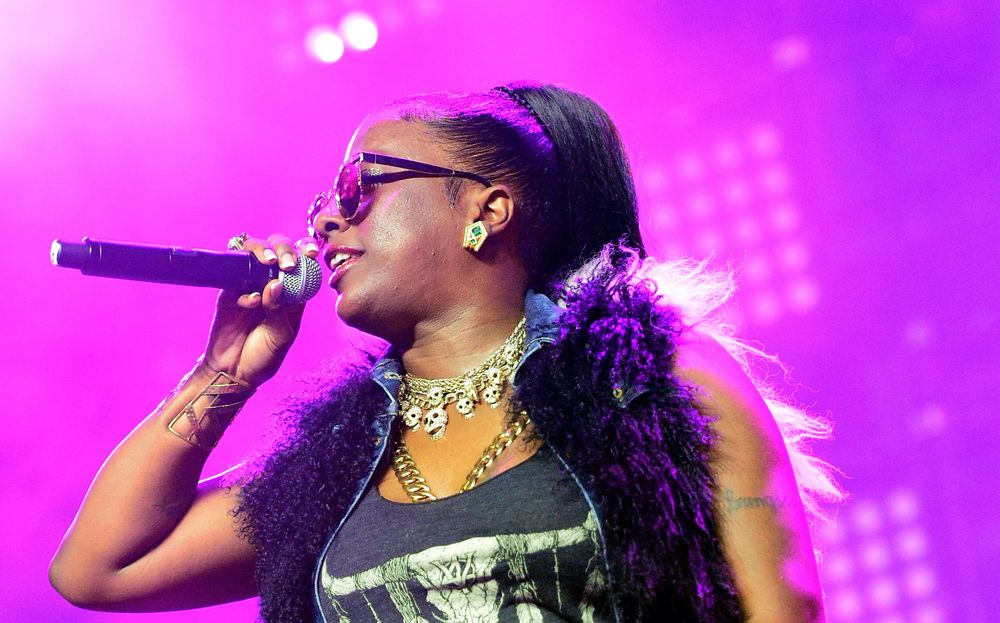Lola Mitchell, better known as Gangsta Boo, was found dead on the porch of her Memphis home on New Year's Day. The Three 6 Mafia rapper’s cause of death is unknown. She was just 43 years old.
Mitchell’s career began when she was just a teenager. In 1995, when she was just 15 years old, Gangsta Boo became a member of Three 6 Mafia, appearing on the group’s debut studio album, Mystic Stylez. Three 6 Mafia didn’t invent the horrorcore genre, which incorporates dark themes you might find in a sinister horror movie. (Hell, even Will Smith got himself a little taste in the '80s). But nobody did it better than the band of Memphis misfits named after the mark of the beast—and nobody had more fun along the way. Gangsta Boo is an integral part of that legacy.
"I believe Boo filled a void in rap at the time," Larry "The Blackspot" Hester, a veteran journalist who documented Three 6 Mafia's rise in Vibe magazine."In the late '90s and early '00s, rap was all about glitz and glamour. Then here comes Gangsta Boo with the musical equivalent of glamorously beating someone with a glitzy baby carseat in a parking lot. It was different and dope as hell."
Throughout her career, Gangsta Boo contributed to some of the group's most memorable early tracks like "Tear Da Club Up '97" and “Who Run It,” and embarked on an equally as fruitful solo career with tracks like “Where Them Dollas At,” “Same Block,” and a host of guest appearances on songs by everybody from Gucci Mane to Blood Orange to OutKast.
There have been numerous reflections and tributes to the rapper from friends, collaborators, and peers. Duke Deuce and GloRilla—young up-and-coming MCs from Memphis—posted expressions of love on social media. It’s worth noting that the screenshots GloRilla published from Gangsta Boo were from well before her breakout hit “F.N.F. (Let's Go)” was released last year. Mitchell had her finger on the pulse of what was fresh and relished the opportunity to give youngbloods their praise and help them along the way.
"There's this style of music now called phonk, which a lot of the younger kids are into," says Hester. "It's EDM, but the core is Memphis rap—many of the songs have samples of [Gangsta Boo] and Three Six Mafia. How many rappers can claim being the musical backbone of a sub-genre?"
Gangsta Boo wasn’t the first female rapper to have an outsized impact on the world—Queen Latifah, Lil Kim, and Missy Elliott are just a few women who took the nation by storm before the rest of the country caught up to that special thing they had brewing down in Memphis. But it’s hard to pinpoint a woman in the male-dominated field who spit with as much energy as Gangsta Boo before she came along. When you hear Southern women like Flo Milli and Rico Nasty effortlessly combine melody and aggressive vocals, it’s a mark of how influential Gangsta Boo was in the rap game. There’s a direct throughline between her and the golden age of women in rap we are experiencing today. Just listen to how she absolutely demolishes Run The Jewels' "Love Again (Akinyele Back)," a 2014 battle of the sexes on which she steals the show from Killer Mike and El-P.
As Clover Hope reported in her book The Motherlode: 100+ Women Who Made Hip-Hop, Gangsta Boo once told Vice the following: “Men are more chauvinistic than they even know, really. I’ve had to go through certain things where I’ve had to push a titty up or two to get things done, whereas a man doesn’t.”
When it comes to female rappers, Gangsta Boo was nothing less than a pioneer. And when it comes to hip-hop (with no adjectives), don’t get it twisted: She was an icon, and an essential piece of the past, present, and future of the genre’s mystic styles.
